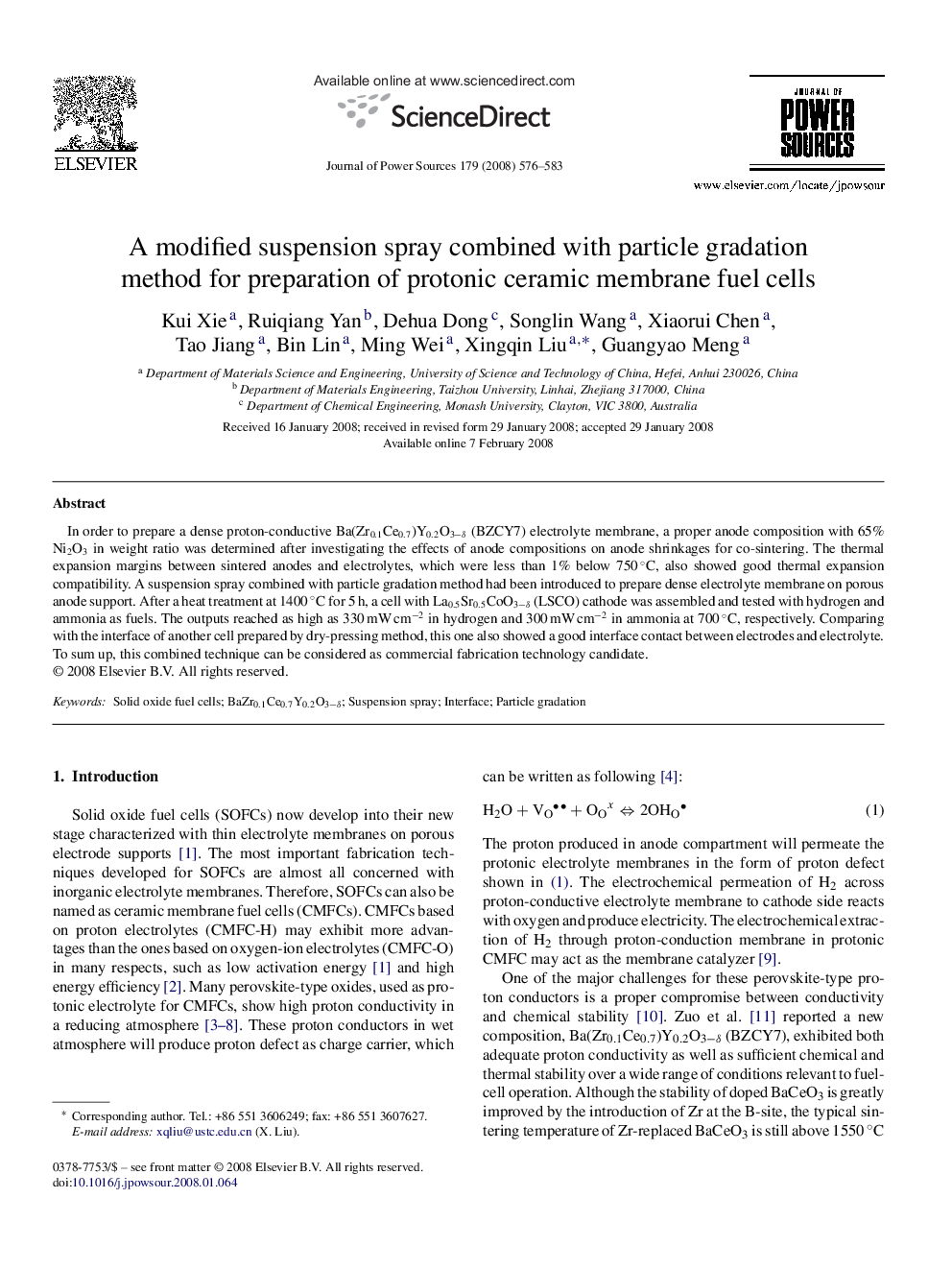| Article ID | Journal | Published Year | Pages | File Type |
|---|---|---|---|---|
| 1294683 | Journal of Power Sources | 2008 | 8 Pages |
In order to prepare a dense proton-conductive Ba(Zr0.1Ce0.7)Y0.2O3−δ (BZCY7) electrolyte membrane, a proper anode composition with 65% Ni2O3 in weight ratio was determined after investigating the effects of anode compositions on anode shrinkages for co-sintering. The thermal expansion margins between sintered anodes and electrolytes, which were less than 1% below 750 °C, also showed good thermal expansion compatibility. A suspension spray combined with particle gradation method had been introduced to prepare dense electrolyte membrane on porous anode support. After a heat treatment at 1400 °C for 5 h, a cell with La0.5Sr0.5CoO3−δ (LSCO) cathode was assembled and tested with hydrogen and ammonia as fuels. The outputs reached as high as 330 mW cm−2 in hydrogen and 300 mW cm−2 in ammonia at 700 °C, respectively. Comparing with the interface of another cell prepared by dry-pressing method, this one also showed a good interface contact between electrodes and electrolyte. To sum up, this combined technique can be considered as commercial fabrication technology candidate.
